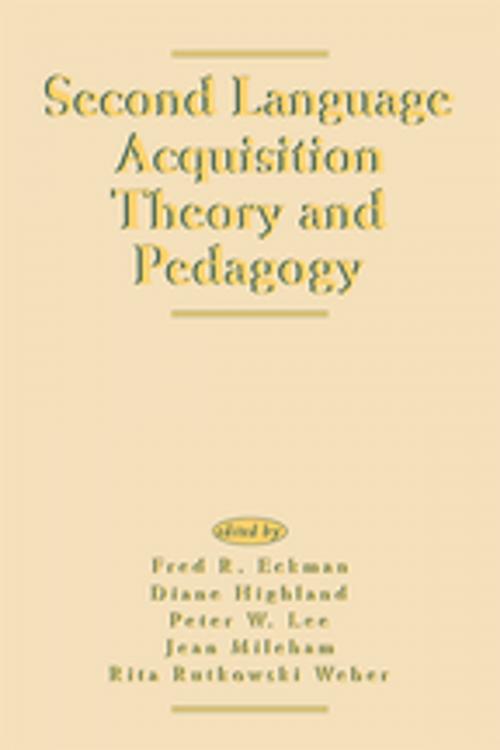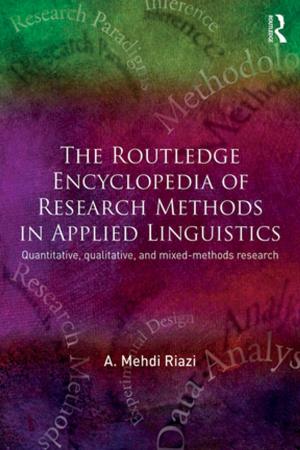Second Language Acquisition Theory and Pedagogy
Nonfiction, Reference & Language, Language Arts, Public Speaking, Speech, Linguistics| Author: | ISBN: | 9781135449056 | |
| Publisher: | Taylor and Francis | Publication: | October 8, 2013 |
| Imprint: | Routledge | Language: | English |
| Author: | |
| ISBN: | 9781135449056 |
| Publisher: | Taylor and Francis |
| Publication: | October 8, 2013 |
| Imprint: | Routledge |
| Language: | English |
A volume on second-language acquisition theory and pedagogy is, at the same time, a mark of progress and a bit of an anomaly. The progress is shown by the fact that the two disciplines have established themselves as areas of study not only distinct from each other, but also different from linguistic theory. This was not always the case, at least not in the United States. The anomaly results from the fact that this book deals with the relationship between L2 theory and pedagogy despite the conclusion that there is currently no widely-accepted theory of SLA.
Grouped into five sections, the papers in this volume:
* consider questions about L2 theory and pedagogy at the macro-level, from the standpoint of the L2 setting;
* consider input in terms of factors which are internal to the learner;
* examine the question of external factors affecting the input, such as the issue of whether points of grammar can be explicitly taught;
* deal with questions of certain complex, linguistic behaviors and the various external and social variables that influence learners; and
* discuss issues surrounding the teaching of pronunciation factors that affect a non-native accent.
A volume on second-language acquisition theory and pedagogy is, at the same time, a mark of progress and a bit of an anomaly. The progress is shown by the fact that the two disciplines have established themselves as areas of study not only distinct from each other, but also different from linguistic theory. This was not always the case, at least not in the United States. The anomaly results from the fact that this book deals with the relationship between L2 theory and pedagogy despite the conclusion that there is currently no widely-accepted theory of SLA.
Grouped into five sections, the papers in this volume:
* consider questions about L2 theory and pedagogy at the macro-level, from the standpoint of the L2 setting;
* consider input in terms of factors which are internal to the learner;
* examine the question of external factors affecting the input, such as the issue of whether points of grammar can be explicitly taught;
* deal with questions of certain complex, linguistic behaviors and the various external and social variables that influence learners; and
* discuss issues surrounding the teaching of pronunciation factors that affect a non-native accent.















